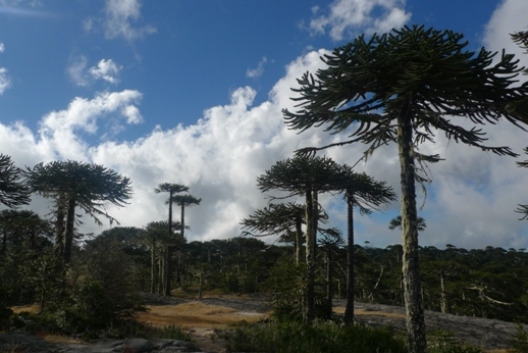
Antarctic forests may be about to make a comeback, according to new research from Royal Holloway, University of London, published this week.
Geoscientist online, 08 March 2012
A comprehensive database of fossilised Cretaceous forests has been compiled for the first time, allowing scientists to create maps of 100 million year-old forests. The maps have provided the most accurate picture yet of a world where atmospheric carbon was at levels of at least 1000 parts per million (ppm).
The Cretaceous period, which lasted from around 145 to 65 million years ago, was one of relatively warm temperatures and high sea levels compared to the present day, and culminated in the famous K/T mass extinction, which saw off the dinosaurs as well as 77% of species.
Several thousand Cretaceous forest sites have been discovered, but their data have never before been brought together in one place. The research, published in the journal Geology, is led by Royal Holloway, University of London PhD student Emiliano Peralta-Medina, who is studying Cretaceous climates as an analogue for future global warming. It provides an insight into the effects of extremely high concentrations of atmospheric CO2 on fauna.
“Our research shows that weird monkey puzzle forests covered most of the planet, especially in the steamy tropics” he told Geoscientist. “At mid-latitudes, there were dry cypress woodlands, and near the North Pole, it was mostly pines.”
This changed towards the end of the Period, when “flowering trees similar to magnolias took off, bringing colour and scent to the world for the first time”.
The study also looked at the width of tree rings from the period, revealing that Cretaceous trees grew at twice the rate of modern trees, with the fastest growth occurring at the poles.
“Some of our fossil trees from Antarctica had rings more than two millimetres wide on average” says co-author Dr Howard Falcon-Lang. “Such a rate of growth is usually only seen in trees growing in temperate climates. It tells us that, during the age of dinosaurs, polar regions had a climate similar to Britain today.”
Atmospheric carbon levels are currently at 393 ppm – a long way off from Cretaceous levels. But the researchers estimate that it will only take us another 250 years to reach 1000 ppm, if concentrations continue to rise unabated.
“If that happens” says Dr Falcon-Lang, “we could see a return of forests to Antarctica. However, it’s unlikely that dinosaurs will be making a comeback.”
- Peralta-Medina, E, Falcon-Lang, H J, 2012: Cretaceous forest composition and productivity inferred from a global fossil wood database. Geology 40 (3), in press